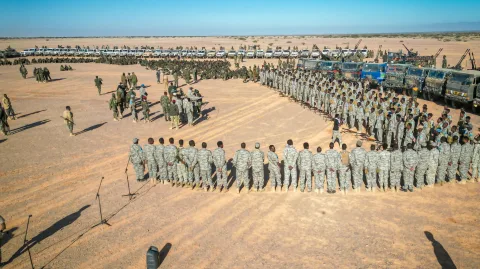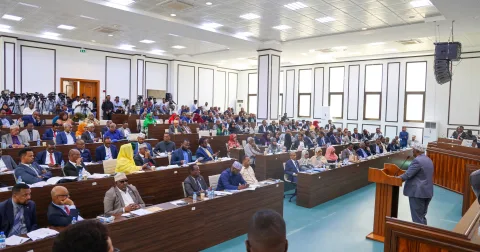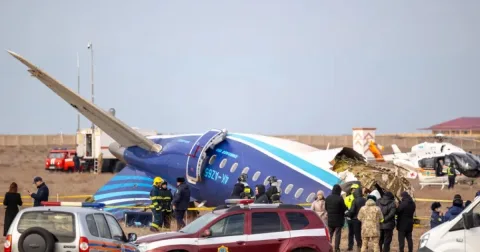On Thursday morning, al-Shabaab militants attacked Garissa University College in the North-eastern province of Kenya. At least 147 were…

On Thursday morning, al-Shabaab militants attacked Garissa University College in the North-eastern province of Kenya. At least 147 were killed, almost all of them students and teachers. Survivors described al-Shabaab gunmen storming the dormitory and mosque in the campus before sunrise. While al-Qaeda inspired group has carried out attacks in the past, and has a long record of killing civilians, this attack — by many counts, the worst in Kenya’s history since the 1998 US embassy attack in Nairobi— was far more extreme than anything they have done before.
The militant organization has a history of attacking other places, but the unprecedented scale this time has raised the question of why the group uses such a horrific tactic. But turning to “soft targets” is often regarded as evidence of weakness in extremist groups.
Al-Shabaab spokesman Ali Mohamud Dheere says this was a revenge for the Kenyan military ‘’atrocities’’ in Somalia, but there’s more to it. He vowed that the group will continue to carry out attacks in Kenya, as long as the KDF are still present in Somalia.
Kenya has suffered a series of attacks since invading Somalia in 2011 to attack al-Shabaab, who it accused of threatening its tourism industry. Kenyan forces have since joined an African Union force battling the Islamists.
It is difficult not to wonder: why? Why did the group launch this brutal attack, and why did it choose to murder over 100 civilians in a single day?
There is no single explanation. But, beyond the obvious barbarity of the perpetrators, two factors seem to have driven the act. First, there is the al-Shabaab’s own explanation, that this was revenge for the Kenyan military targeting their camps in Southern Somalia— though it seems unlikely that this is the real reason. Second, and much more plausibly, the group may have wanted to show that it was still viable, despite recent heavy losses against the African Union peacekeepers and Somali military.
The al-Shabaab, weakened, may have hoped this would be a show of force and brutality. Last year, the offensive launched against the militants in strategic provinces and towns it controlled led to a decline in its influence in the country. The Garissa College university attack may have been intended as a show of force in response to that campaign, a way to return fire and demonstrate the group’s strength.
Perhaps the University attack was the al-Shabaab’s attempt to demonstrate that the allied forces have not hindered its ability to conduct major operations.
Whilst, many commentators and Kenyan citizens argue that it is the government that made possible for the militants to continuously wage attacks in the East African nation, mostly in North-eastern province which is dominated by the Somali ethnic.
Unpatrolled border
Al-Shabaab has found breeding places in some parts of Kenya, with analysts saying that it is due to the security loophole in the border.
Local residents have complained of the growing insecurity in towns close to the Somalia-Kenya border, which many agree that it is not well protected, though there was a previous plan introduced – to build a wall in order to contain and monitor the movement of the militants.
This has made easier for al-Shabaab to come into Kenya, access of arms and cause terrorist activities. If terrorist groups can maximise this security loophole then the security of the country would always be at risk.
‘’ A Coordination should be made between national and county governments when it comes to security matters and that the county governments should come up with laws that will enable them have a say on any security challenges especially terrorism,’’ says a representative from the Garissa county.
Besides that, al-Shabaab has managed to attract and recruit many young frustrated Kenyan young men. They have used a divide and rule tactic; which they believe that if they divide Muslims and Christians in different sectarian group, they will have a foundation to champion their ideology.
‘’ The government of Kenya and religious scholars need to come up with an ideology that unites all Kenyans irrespective of their religious and political beliefs so that they can tackle this crisis,’’ says one cleric from Mombasa.
Attacking soft targets
Since last year, al-Shabaab seems to have increased attacks on soft targets – shopping malls, hotels, tourist sites, bus stops, railway stations, and restaurants as well as religious venues and schools – both in Somalia and Kenya.
Recent terrorist attacks focusing on these soft targets have become more prevalent and deadly, posing a major threat to security in both countries.
Garissa attack comes a week after al-Shabaab stormed a hotel in Mogadishu, killing more than 20 people after more than 14 hours of siege.
The group’s latest attack reflects on diminished power against the African Union and Somalian government when they were unable to initiate massive counterattack. As compared with control of“half of the country”at the height of Al-Shabaab’s power, the territory under the group’s control since the beginning of 2013 is very small. To alleviate pressure in the frontline battlefield, Al-Shabaab was desperate and intended to push back foreign“intervention forces”by attacking soft targets.
For a terrorist organization, attacks on hard targets, such as heavily guarded government buildings and military installations, produce greater effects from the political and ideological point of view. Assaults against soft targets, not a first choice, indicate that the power of the group has declined.
However, as many commentators have said and Kenyans, this massacre should serve as a turning point for Kenyan politics.
Al-Shabaab is likely to continue its strategy of attacking ‘soft’ government or civilian targets. Its objective is to try to build up a critical mass of public opinion with enough such attacks to force the offensive against them, which would enable them to re-establish themselves in their strongholds in parts of Southern Somalia.
Hussein Farah
Horseed Media





